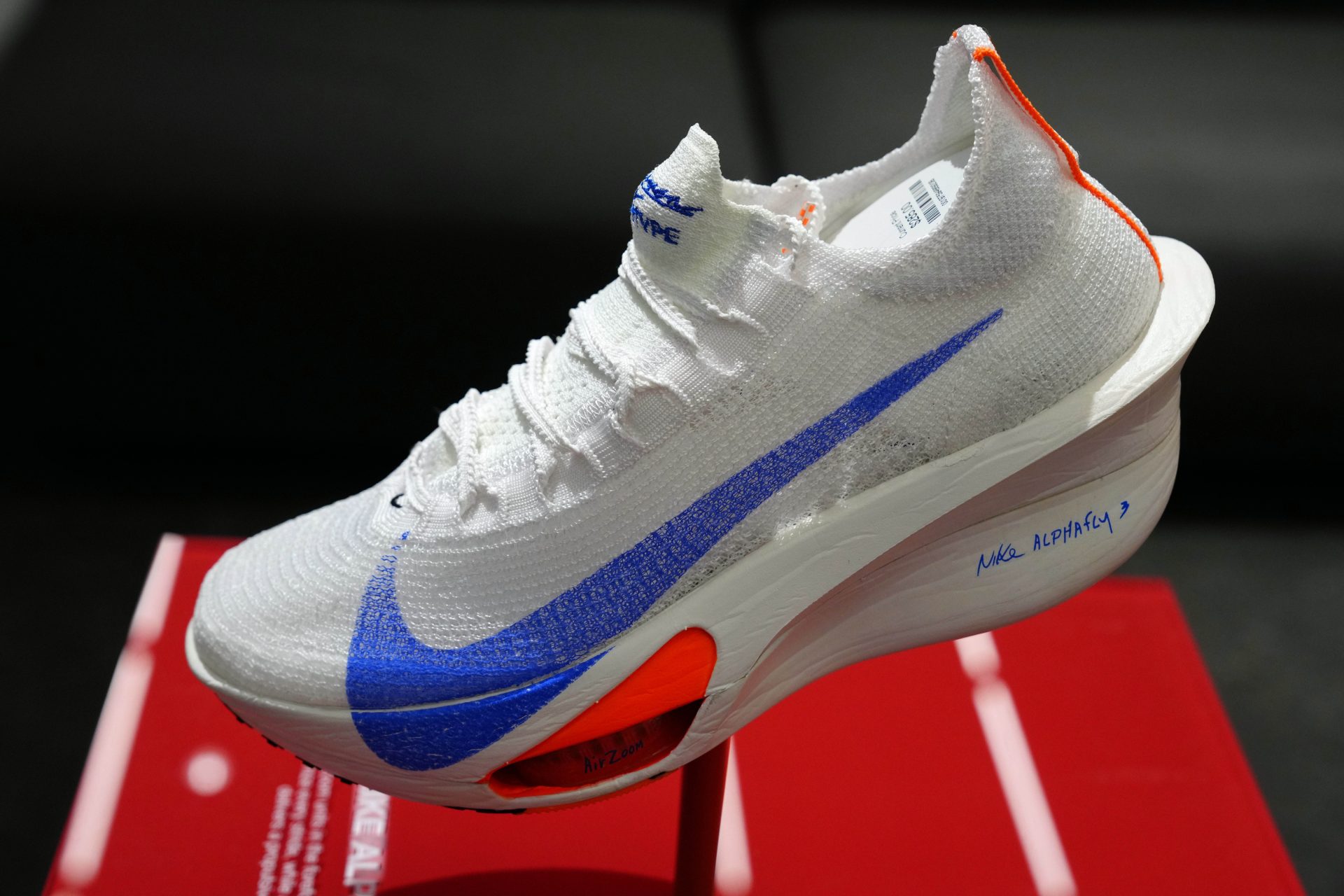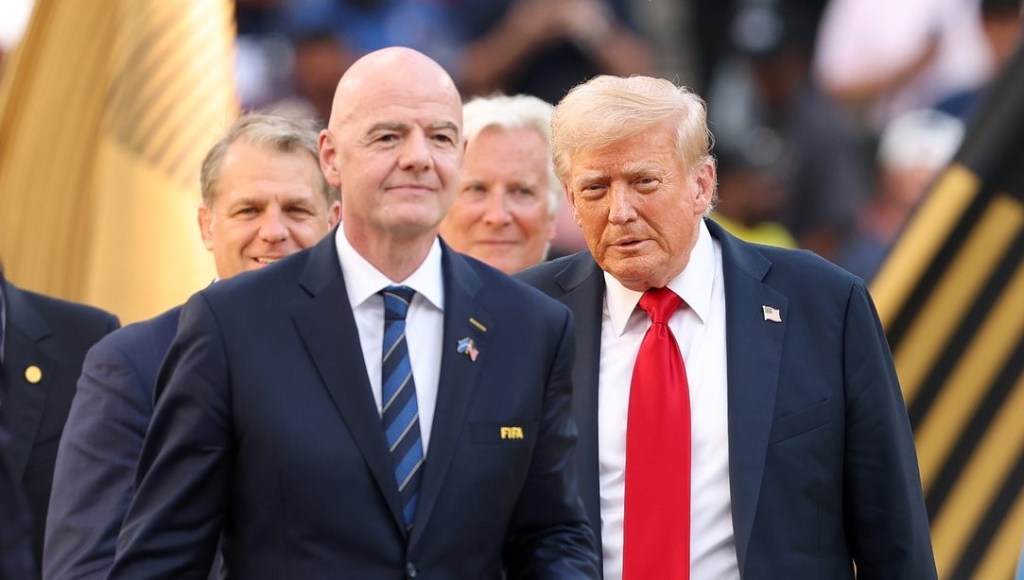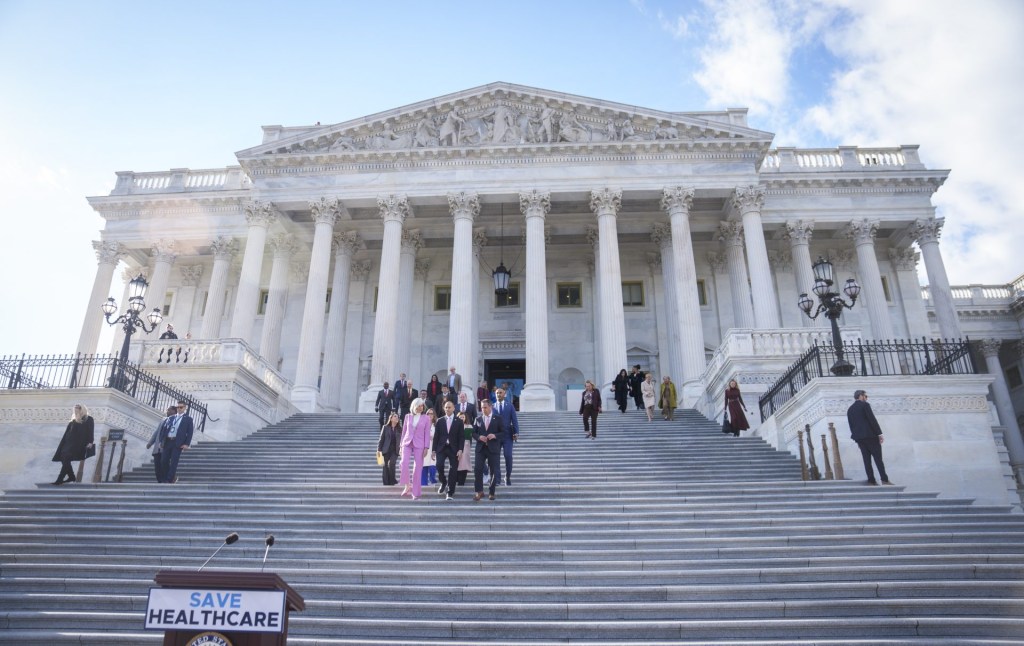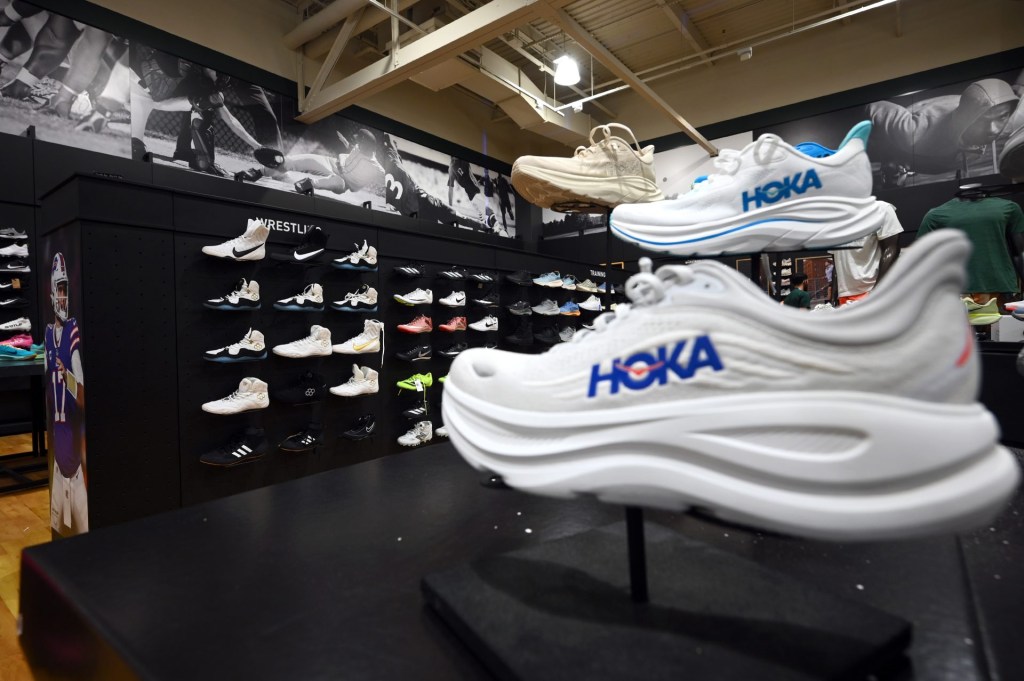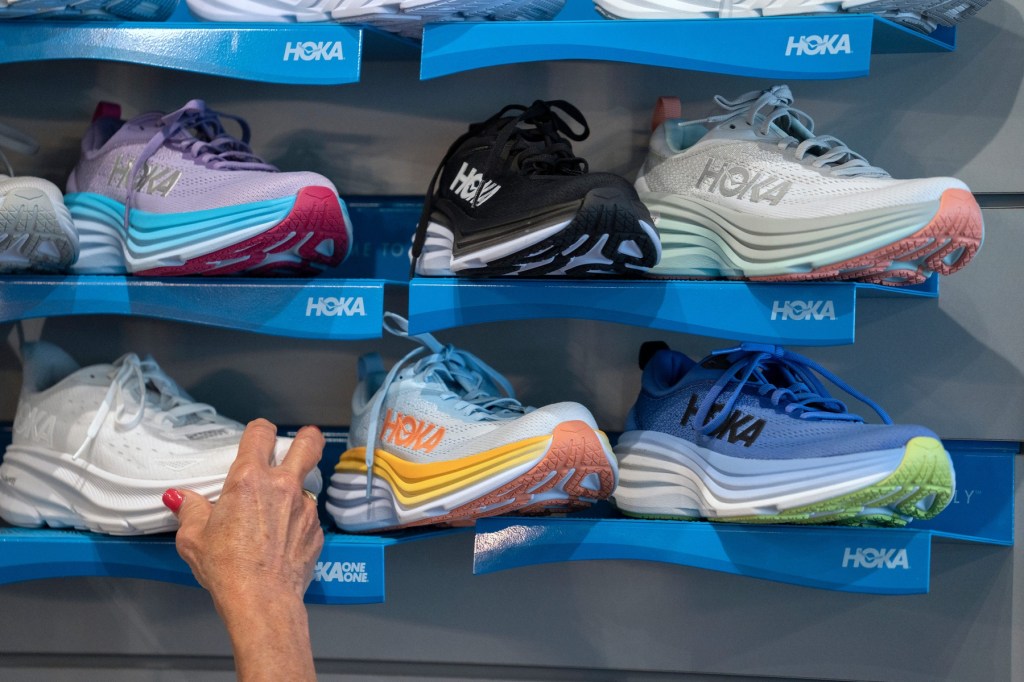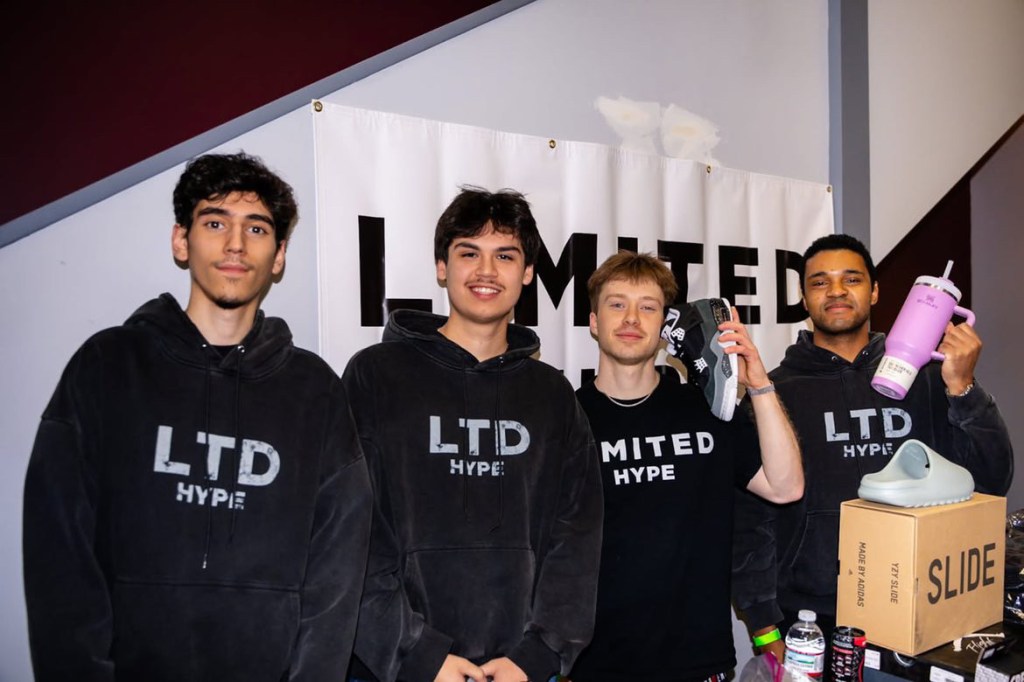Nike will report its fourth-quarter earnings Thursday, another signpost on its road back from its most challenging year ever. Investors and analysts will be hunting for signals of how the sportswear behemoth is navigating both its own turnaround and tariff uncertainty.
In March, Nike forecasted that fourth-quarter sales would drop at a rate in the mid-teens from the year before, following a 9.3% sales drop in the third quarter. The company—plagued by excess inventory—was still in the process of clearing shelves.
Inventory
Backlogged inventory was a problem a year ago, six months ago, three months ago. The story will likely be the same Thursday.
Leading up to COVID-19, Dunks, Air Jordans, and Air Force 1s were among the hottest shoes around. The classic designs fueled heady sales growth that has since petered out. They exploded in popularity during the pandemic, and Nike capitalized on their popularity by releasing many different colorways. (Take the Nike Dunk Low Retro Panda: On sneaker resale site StockX, the price was around $300 in 2021 and now it’s close to $50.) It’s been trying to make a dent in its inventory glut for several quarters.
“Nike still has too much inventory in its major geographic regions. It will need to continue discounting to reduce excess inventory and make room for new products,” Morningstar retail analyst David Swartz tells Front Office Sports.
While Nike is “far from done,” it has made aggressive moves to this end in Q4, Bernstein analysts wrote in a recent note. It’s selling “large quantities of aged lifestyle footwear inventory into off-price (where it should sell through very quickly). We also know from our channel checks that Nike has been buying back inventory from China retailers in Q3 and Q4—implying again that the inventory numbers should look better,” they wrote.
Nike previously set a target of being mostly clear of excess inventory by the end of November, so any comments suggesting “they’re on track to meet this timeline will be a good sign,” Bernstein says.
Promotions
Being too promotional has been another hurdle. As part of his turnaround strategy, new CEO Elliott Hill said in March that the company is reducing promotions and discounting at lower rates.
Nike was already anticipating lower sales because of fewer promotions, Morgan Stanley analysts wrote in a recent note. That, combined with higher prices from tariffs, results in a “material risk to Nike’s unit volumes sold,” they wrote, adding that the company’s fundamentals are “still challenged.”
Tariffs
As of June 1, Nike increased prices on certain footwear and apparel above $100 (but did not explicitly link the move to President Donald Trump’s tariffs).
“Tariff headwinds are also an unknown that hasn’t been factored in,” Bernstein analysts wrote. Some believe Nike is well positioned to navigate the tariff environment due to its negotiating power with vendors and retailers and pricing power.
As companies spanning all industries reel from tariffs on U.S. imports imposed by the Trump Administration, a number have said they plan to pass on costs to consumers, including retail behemoth Walmart. Adidas CEO Bjørn Gulden said in April, following first-quarter results, that it’s not planning any price increases yet, but it would have to pass along increases if the currently paused tariffs end up going through. On Holdings also plans to raise prices on certain products in the U.S., but it said tariffs aren’t to blame. Rather, the Swiss sportswear company touted its strong premium positioning.
The 90-day pause on “reciprocal” tariffs, first announced in April, will end July 9. (Some countries, including Vietnam—where Nike manufactures 50% of its footwear—are working to finalize trade deals with the U.S. ahead of the deadline.)
Running Category
It’s not all doom and gloom: Running has become more of a bright spot for Nike. The running shoe category in general has outperformed the broader sportswear sector, Bernstein wrote in a separate June 23 note—particularly premium running shoes of $100 or more.
Nike’s Vomero and Pegasus shoes are generating high consumer interest and strong sales.
Retailers expect Nike’s share of running to grow to the high single digits by next year, Bernstein analysts wrote, but it is still far from its heyday when its share of the running market was in the mid-teens. As Nike inches further into the specialty running market, Brooks and Hoka will lose “incremental share as retailers diversify into Nike (and Asics, On, New Balance, Adidas, which are all growing),” they wrote.
Guidance
With so many companies pulling guidance in the first half of the year due to tariff uncertainty, it’s likely Nike will do the same. Neither Swartz nor Bernstein analysts expects Nike to issue guidance for fiscal year 2026.
“We will probably be given some guidelines, such as that it will take the first half of [fiscal year 2026] to get inventory under control,” Swartz tells FOS. Otherwise, “Nike will probably play it safe,” he adds.
Nike’s recovery story is showing some faint sparks of life, but Bernstein does not “expect to see much short-term progress on numbers this quarter.” The upside will have to come later.
Shares of Nike are 18% lower year-to-date, while the broader market is up about 3.5%.
